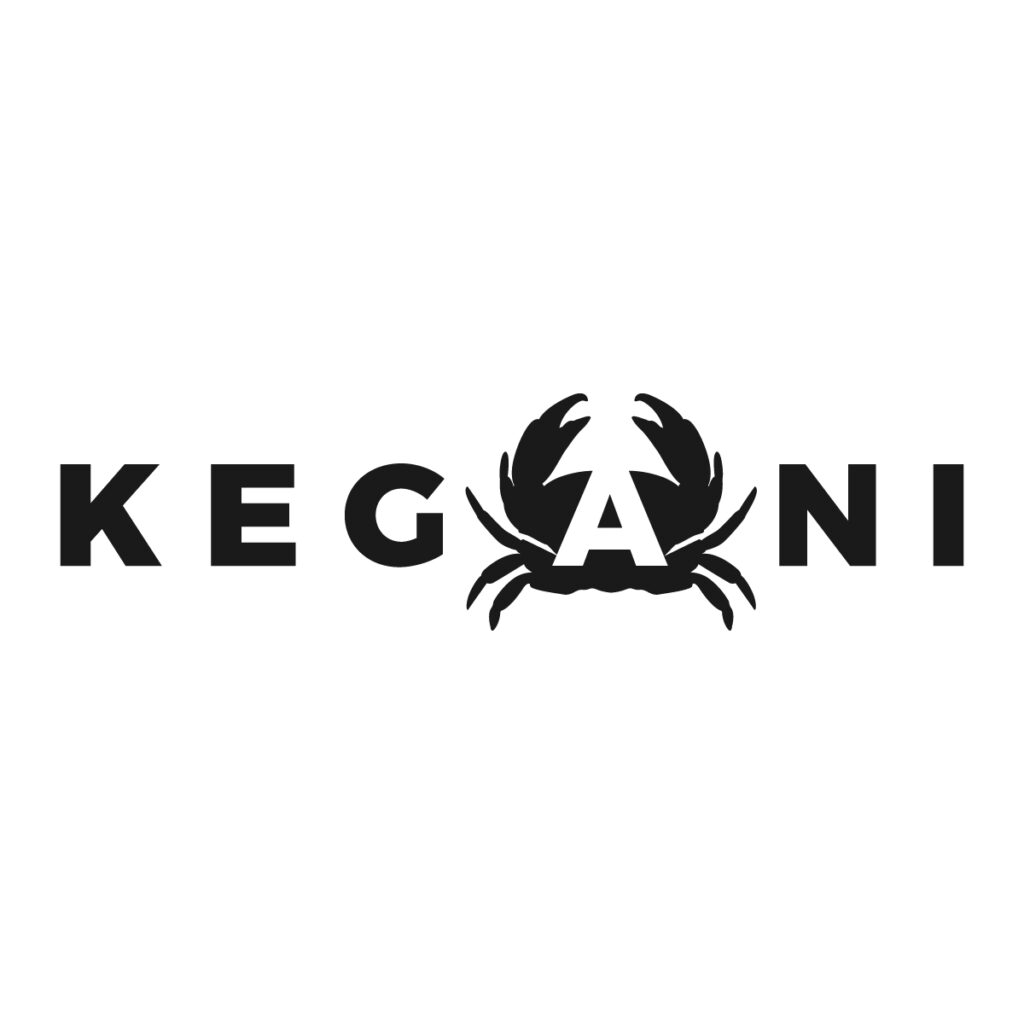Damascus steel has long captured the imagination of knife makers and collectors alike.
Known for its swirling patterns, unmatched durability, and storied origins, it’s a material that blends beauty with performance.
But how is Damascus steel made, and why does it still matter today?
In this guide, we’ll break down everything you need to know: the history behind Damascus steel, the different types in today’s market, and how modern techniques recreate its signature look and strength.
What Is Damascus Steel?
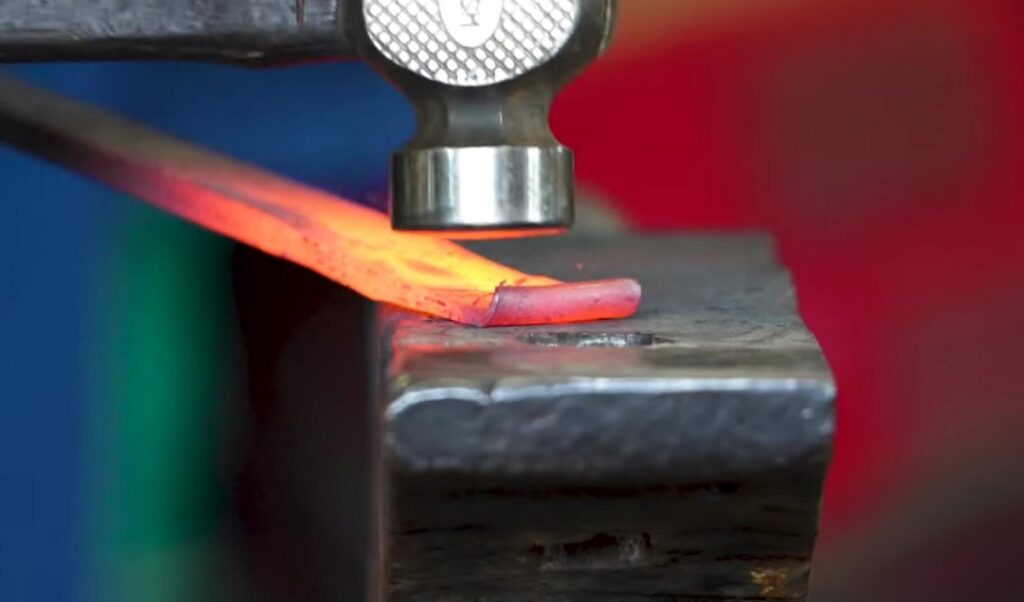
Damascus steel is a type of steel known for its striking wavy patterns, exceptional hardness, and legendary sharpness.
Traditionally used in swords and knives, it combines beauty with performance, making it a prized material among blacksmiths, collectors, and knife makers alike.
But Damascus steel isn’t a single formula. Instead, the term refers to both a historic material and various modern recreations that imitate its appearance or properties.
Key characteristics:
- Visual appeal: Swirling, patterned surface created through folding or etching.
- Performance: High carbon content allows for sharpness and edge retention.
- Cultural legacy: Famed for being nearly impossible to recreate in its original form.
Why is it called Damascus steel?
The name is believed to come from Damascus, the capital of Syria – a major trading hub during the medieval era.
Some say the blades were forged there, while others believe the name refers to the steel’s resemblance to damask textiles, known for their patterned weave.
Today, the term “Damascus steel” typically refers to pattern-welded steel, layers of different steels forge-welded together and acid-etched to reveal the grain.
In the next section, we’ll look at the different types and evolutions of Damascus steel, including both ancient and modern innovations.
Variants of Damascus Steel
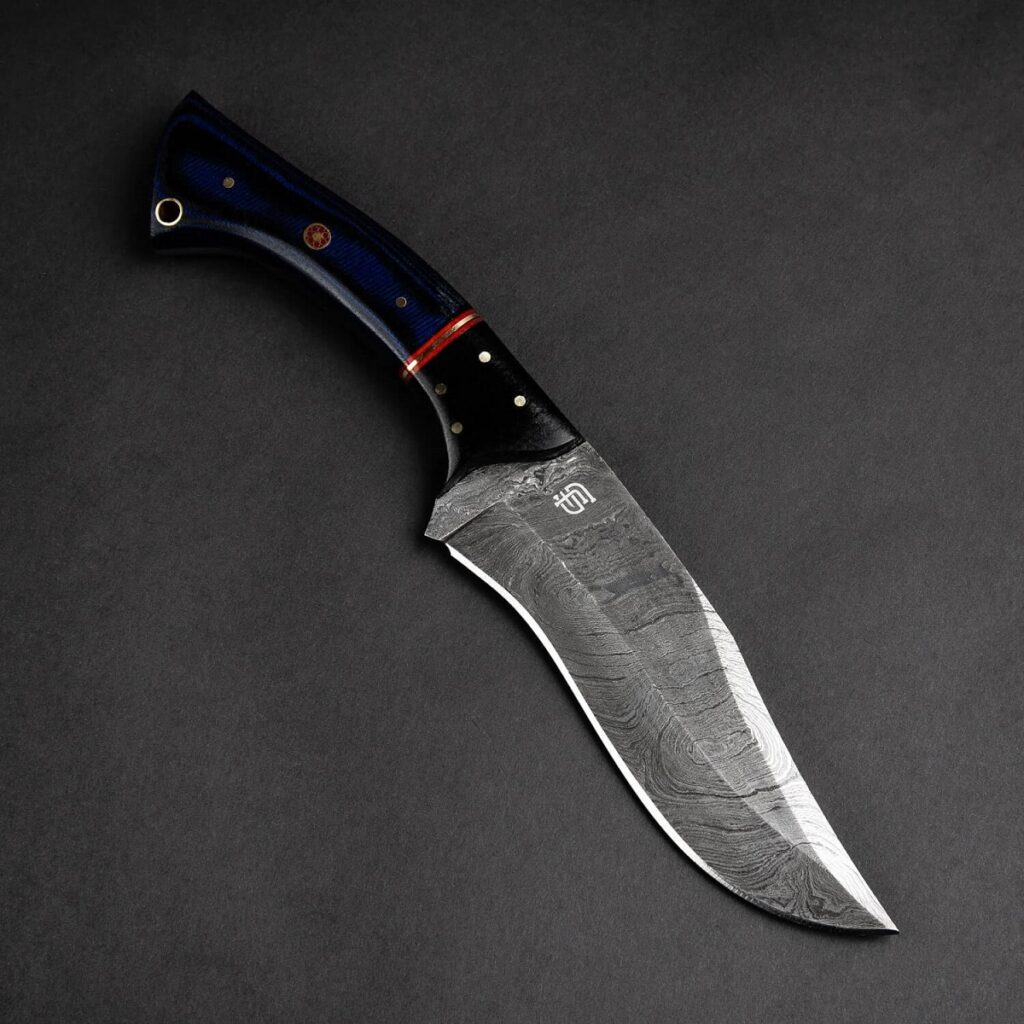
Over time, the definition of Damascus steel has evolved. What was once a mysterious, high-performance metal from the ancient world is now a broad term used for various steel-making techniques that mimic or modernize its qualities.
Here are the main variants of Damascus steel you’ll encounter:
1. Traditional Damascus Steel (Wootz Steel)
This is the original Damascus steel, made from Wootz steel, a crucible steel developed in ancient India and Sri Lanka as early as 300 BCE.
It was known for its internal carbon structures, which created beautiful patterns and an unusually sharp edge.
The technique to produce true Wootz steel was lost around the 18th century and has never been fully recovered.
- Key trait: Naturally occurring patterns from the alloy’s internal carbon structures.
- Rarity: No longer produced; only found in antique blades or experimental reproductions.
2. Modern Damascus Steel
Today, most “Damascus” knives and blades are made using modern processes like pattern welding or powder metallurgy. These mimic the aesthetic of traditional Damascus while offering durability and reliability using contemporary steel types.
- Key trait: Aesthetic and performance inspired by the original, but using modern metallurgy.
If you want to know the difference between Ancient Wootz Steel and Modern Damascus Steel, please check out our comprehensive guide
· 2.1 Pattern-Welded Steel

This is the most common modern version of Damascus steel. It involves stacking and forge-welding multiple types of steel (usually high-carbon and nickel), then twisting, folding, and etching them to produce distinctive patterns.
- Key trait: Decorative layers created through physical manipulation and acid etching.
- Application: Popular in kitchen knives, custom blades, and decorative tools.
· 2.2 Stainless Damascus Steel
A variation of pattern-welded steel made with stainless alloys, offering the same patterned look with greater corrosion resistance. It’s ideal for kitchen knives and tools that need both function and aesthetics.
- Key trait: Rust-resistant with modern polish and shine.
- Performance: Lower maintenance, suitable for humid environments.
· 2.3 Damasteel® (Powder Metallurgy Damascus)
Developed by a Swedish company, Damasteel is a patented form of stainless Damascus made using powder metallurgy. Instead of traditional forging, metal powders are compressed and bonded using heat and pressure (HIP), resulting in a precise and uniform steel with distinct etched patterns.
- Key trait: Ultra-clean structure, excellent performance, and unique design options.
- Use case: High-end kitchen knives, luxury folders, and custom blades.
How Damascus Steel Is Made
Damascus steel can be made using several techniques depending on the desired properties and appearance.
While traditional methods are now considered lost, modern techniques, especially pattern welding, have allowed knife makers to replicate the signature look and performance of Damascus blades with remarkable consistency.
Let’s break down how it’s done.
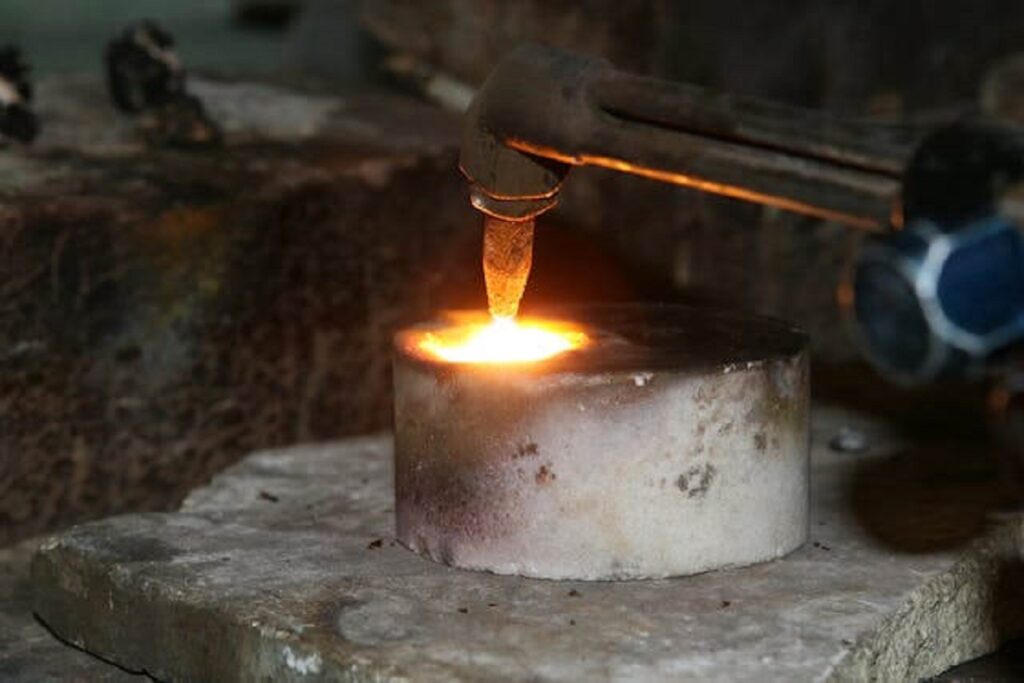
1. Traditional Method (Wootz Steel)
Historically, Damascus steel was made using Wootz steel, a high-carbon crucible steel developed in ancient South Asia.
The process involved melting iron with organic materials in sealed containers to create a steel with embedded carbon structures. When forged, these created natural patterns across the blade.
Unfortunately, this exact method has been lost for centuries. Modern smiths occasionally attempt to recreate Wootz blades, but results vary due to unknown variables like ore composition and forging temperatures.
2. Modern Pattern-Welded Damascus Steel (Step-by-Step)
Today, most Damascus knives are made using pattern welding—a method of layering and forge-welding multiple steels together to form distinctive patterns. This technique combines both form and function, delivering blades that are tough, sharp, and visually stunning.
Here’s a simplified step-by-step guide:
Step 1. Steel Selection
Knife makers typically combine steels with different properties, such as:
- High-carbon steel – for hardness and edge retention
- Nickel or stainless steel – for contrast and durability
Step 2. Layering the Steels
Sheets or bars of selected steels are stacked in alternating layers (e.g., 15 to 100+ layers) to form a “billet.”
Step 3. Forge Welding

The billet is heated in a forge until it reaches welding temperature (~2300°F / 1260°C) and then hammered or pressed until the layers fuse together into one solid block.
Step 4. Drawing Out and Folding
The billet is stretched (drawn out), then folded back onto itself to double the layers. This process may be repeated multiple times to increase the number of visible layers.
Step 5. Pattern Manipulation
The blacksmith may:
- Twist the billet
- Cut and restack
- Grind or drill into it
These steps shape the unique swirling or ladder-like patterns associated with Damascus steel.
Step 6. Shaping the Blade
The billet is forged into the final knife shape and rough-ground to prepare for finishing.
Step 7. Etching
Once the blade is polished, it’s dipped into an acid bath (often ferric chloride). The acid reacts differently with each type of steel, revealing the contrast and showcasing the layered pattern.
Start Working with a Professional Now
3. Damasteel® – The Powder Metallurgy Version
Damasteel is a trademarked Swedish steel made using powder metallurgy and Hot Isostatic Pressing (HIP).
Instead of stacking solid steels, metal powders are compressed under heat and pressure to create an incredibly uniform and high-performance blade steel.
- It’s typically stainless, making it corrosion-resistant.
- Known for ultra-clean, consistent patterns.
- Popular in premium kitchen knives and luxury blades.
| Type | Method | Features | Ideal Use Cases |
| Wootz Steel | Crucible smelting | Historical, naturally patterned | Antiques, experimental pieces |
| Pattern-Welded | Forge-welded layers | Custom patterns, strong & durable | Kitchen knives, swords |
| Stainless Damascus | Same as above w/ stainless | Rust-resistant, low maintenance | High-end kitchen tools |
| Damasteel® | Powder metallurgy + HIP | Precision patterns, premium finish | Luxury knives, collectors |
How Is Damascus Steel Used Today?
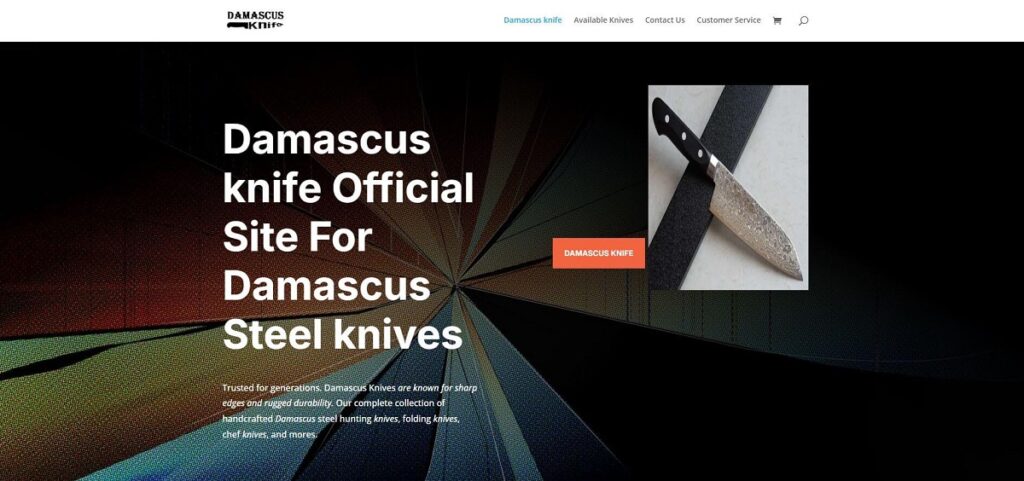
Modern Damascus steel isn’t just admired for its beauty, it’s also highly functional. Here are some of the most common uses today:
- Kitchen Knives – Damascus steel is a favorite in the culinary world. Its layered structure allows for sharp, durable edges, while the etched patterns give each blade a distinctive appearance. Chefs and cooking enthusiasts alike often choose Damascus knives for both function and flair.
- Hunting and Outdoor Knives – Damascus steel performs well in outdoor environments thanks to its strength and edge retention. Custom hunting knives, survival blades, and everyday carry tools often use Damascus for a mix of durability and craftsmanship.
- Collectible and Custom Blades – Knife makers and collectors value Damascus steel for its unique appearance. Since no two patterns are exactly alike, each blade becomes a one-of-a-kind piece, ideal for personal collections or display.
- Luxury Tools and Accessories – Premium versions like Damasteel are used in high-end applications such as watches, jewelry, and precision tools. These products combine technical performance with an elevated visual design.
FAQs
How do different Damascus steel patterns form?
Damascus steel patterns are created by manipulating layers of different steels during the forging process.
Techniques like twisting, folding, cutting, grinding, or drilling the layered billet all influence the final design. The pattern becomes visible after etching, which reveals the contrast between the metals.
Common patterns include:
- Ladder
- Twist
- Raindrop
- Feather
Each blade’s pattern is unique, no two are exactly the same.
Why can’t we recreate original Damascus steel?
The original Damascus steel was made using Wootz steel, a type of crucible steel produced in ancient India and Sri Lanka.
The exact process, especially the specific ore sources, smelting conditions, and carbon content, has been lost over time. Modern metallurgists have attempted to replicate it, but the original material’s precise structure remains elusive.
How to make Damascus steel without welding?
It’s technically possible using powder metallurgy, as seen in products like Damasteel®. Instead of forge welding, fine steel powders are compressed and fused using Hot Isostatic Pressing (HIP).
This process allows for precise control over the steel’s properties without traditional layering and forging, making it a modern, weld-free approach to creating Damascus-like patterns.
Final Thoughts
Damascus steel is more than just beautiful, it’s a fusion of tradition, craftsmanship, and innovation.
Whether it’s the ancient allure of Wootz steel, the artistry of pattern welding, or the precision of modern Damasteel, each type has its place in the world of blades.
For businesses looking to source Damascus steel knives, whether for retail, wholesale, or private label, understanding these differences can help you choose the right product for your customers.
At Kegani, we specialize in helping companies like yours manufacture high-quality knives in China with confidence.
Whether you need OEM services or want to buy Damascus knives in bulk, get in touch with us to discuss your needs.
